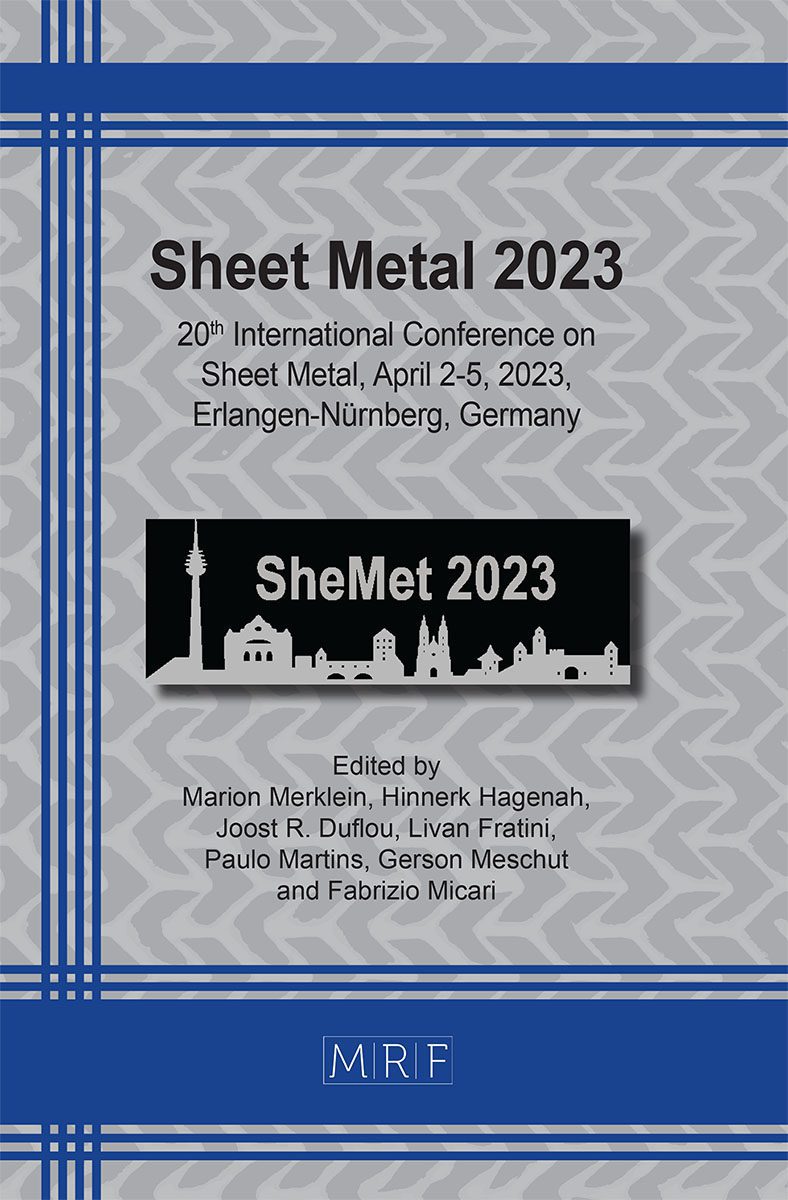Approach to transferring force-based fatigue curves into stress-related fatigue curves for clinch joints
Lars Ewenz, Martin Kuczyk, Martina Zimmermann
download PDFAbstract. Cyclic strength is essential in many lightweight design concepts where the design is to be pushed to the limits of strength. While joining dissimilar metals such as aluminum and steel is a challenge of its own, fatigue life prediction for this joining type is all the more challenging. Here, clinching as a mechanical joining process offers many advantages. However, a generalized evaluation of the fatigue properties is complex since many influencing factors, such as the joint’s geometry, the high plastic deformation, the proportion of bonding mechanisms, have to be considered. Force versus number of cycles (F-N) curves are the established basis to describe the fatigue behavior of clinch joints. However, a generalized evaluation of the service life requires stress versus number of cycles (S-N) curves. This research gives a first approach to transferring F-N curves to S-N curves on the basis of nominal stress determination in the damage relevant clinch cross section. The material combination used, EN AW-6014 and HCT590, offers excellent practical relevance since both materials are widely used in the automotive industry.
Keywords
Fatigue, Joining, Clinching
Published online 3/17/2023, 6 pages
Copyright © 2023 by the author(s)
Published under license by Materials Research Forum LLC., Millersville PA, USA
Citation: Lars Ewenz, Martin Kuczyk, Martina Zimmermann, Approach to transferring force-based fatigue curves into stress-related fatigue curves for clinch joints, Materials Research Proceedings, Vol. 25, pp 141-146, 2023
DOI: https://doi.org/10.21741/9781644902417-18
The article was published as article 18 of the book Sheet Metal 2023
![]() Content from this work may be used under the terms of the Creative Commons Attribution 3.0 licence. Any further distribution of this work must maintain attribution to the author(s) and the title of the work, journal citation and DOI.
Content from this work may be used under the terms of the Creative Commons Attribution 3.0 licence. Any further distribution of this work must maintain attribution to the author(s) and the title of the work, journal citation and DOI.
References
[1] Y. Abe, K. Mori, T. Kato, Joining of high strength steel and aluminium alloy sheets by mechanical clinching with dies for control of metal flow. Journal of Materials Processing Technology 212 (2012) 884–889. https://doi.org/10.1016/j.jmatprotec.2011.11.015
[2] J. Kalich and U. Füssel, Design of clinched joints on the basis of binding mechanisms. Prod. Eng. Res. Devel. 16 (2022) 213–222. https://doi.org/10.1007/s11740-022-01108-z
[3] J. Kalich, U. Füssel, Influence of the Production Process on the Binding Mechanism of Clinched Aluminum Steel Mixed Compounds, JMMP 5 (2021) 1–11. https://doi.org/10.3390/jmmp5040105
[4] L. Ewenz, J. Kalich, M. Zimmermann, U. Füssel, Effect of Different Tool Geometries on the Mechanical Properties of Al-Al Clinch Joints, KEM 883 (2021) 65–72. https://doi.org/10.4028/www.scientific.net/KEM.883.65
[5] L. Ewenz, C. R. Bielak, M. Otroshi, M. Bobbert, G. Meschut, M. Zimmermann, Numerical and experimental identification of fatigue crack initiation sites in clinched joints, Production Engineering (2022) 305–313. https://doi.org/10.1007/s11740-022-01124-z
[6] G. Meschut et al., Review on mechanical joining by plastic deformation, Journal of Advanced Joining Processes 5 (2022) 1–27. https://doi.org/10.1016/j.jajp.2022.100113
[7] R. Kupfer et al., Clinching of Aluminum Materials – Methods for the Continuous Characterization of Process, Microstructure and Properties. Journal of Advanced Joining Processes 5 (2022) 1–12. https://doi.org/10.1016/j.jajp.2022.100108































